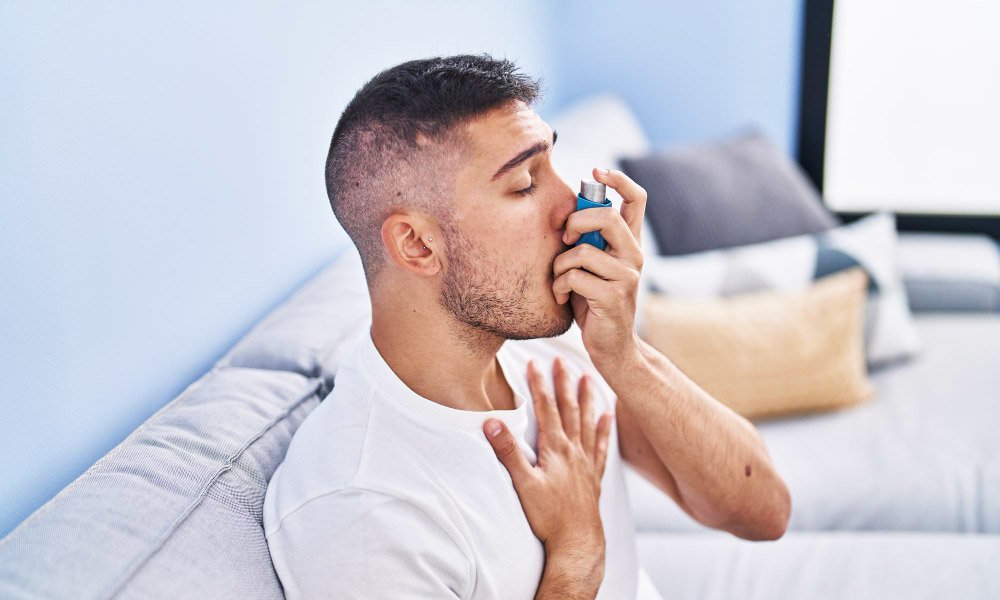Guide
Adenoidid: Signs, Causes, and What to Do Next
Published
4 months agoon
By
Archie
Imagine your child always has a stuffy nose. They snore loudly at night, breathe through their mouth all day, and seem tired even after sleeping. You try cold medicine, allergy sprays, and humidifiers—but nothing helps. It could be something deeper than just a cold or allergy. It might be adenoidid.
Adenoidid is a word many parents haven’t heard, but it affects many kids—especially between the ages of 2 and 10. It means the adenoids in the back of your child’s nose are swollen or infected. This can cause problems with breathing, sleeping, hearing, and even learning.
In this article, we’ll explain everything in simple words. You’ll learn what adenoidid is, what causes it, how to spot the signs, and what steps to take next. Let’s break it down together—one clear step at a time.
What Are Adenoids and What Do They Do?
Adenoids are tiny soft lumps of tissue at the back of the nose, just above the throat. You can’t see them by looking in the mirror like you can with tonsils, but they are there, working quietly behind the scenes.
Their job is to catch germs. When your child breathes in through the nose, the adenoids help trap bacteria and viruses so they don’t go deeper into the body. They also help the immune system fight off infections, especially when kids are small.
But here’s something important: adenoids are much bigger and more active in young kids. After the age of 10 or so, they start to shrink on their own. That’s why adenoidid is mostly seen in young children, not teens or adults.
What Exactly Is Adenoidid?
Adenoidid is when the adenoids become inflamed. This means they get swollen, red, and irritated. Sometimes, they also get infected with bacteria or viruses. This makes your child feel uncomfortable—and often makes it hard for them to breathe through the nose.
When adenoids swell up too much, they can block the nose completely. This forces your child to breathe through the mouth. It can also affect their ears, voice, and sleep. Adenoidid often shows up after a cold or sinus infection, but in some kids, it becomes a regular problem.
Even though it’s most common in kids under 10, adults can have it too—but that’s rare. In children, the signs are easier to miss because they can seem like “just a cold” that never goes away.
What Causes Adenoidid in Children?
There are many things that can cause adenoidid, and often it’s not just one reason. Here are some of the most common causes:
-
Viral infections: A simple cold or flu can make the adenoids swell.
-
Bacterial infections: Sometimes bacteria like streptococcus infect the adenoids.
-
Allergies: Kids who are allergic to dust, pollen, or pets may have constant swelling in the adenoids.
-
Air pollution or smoke: Dirty air or secondhand smoke can irritate the adenoids.
-
Repeated throat or sinus infections: These infections can travel to the adenoids and cause a cycle of swelling and sickness.
It’s helpful to know the cause, because it can affect the treatment. For example, allergies and viruses are treated very differently from bacterial infections.
How to Know If Your Child Has Adenoidid (Common Signs)
So, how do you know if your child has adenoidid? Here are the signs most parents notice:
-
Stuffy nose all the time – even when there’s no runny nose
-
Breathing through the mouth – especially while sleeping or playing
-
Loud snoring – often with pauses or restless sleep
-
Ear infections – again and again, because the adenoids block the tubes that drain the ears
-
Bad breath – even with brushing
-
Sore throat or voice changes – sounding nasal or hoarse
A lot of these signs are easy to confuse with other things. But when they last more than a week or two, it’s time to look deeper. Many parents don’t realize it’s the adenoids causing all the trouble until a doctor checks.
When Should You See a Doctor?
It’s okay if your child has a stuffy nose once in a while. But there are times when you should definitely see a doctor.
You should call your doctor if:
-
The symptoms don’t go away after 10–14 days
-
Your child has a fever along with stuffy nose and snoring
-
They seem tired all the time or fall asleep during the day
-
They stop hearing clearly or say “what?” too often
-
You notice pauses in their breathing at night
-
Their face shape starts to change (long face, open mouth)
The sooner you act, the easier it is to treat. Waiting too long can make things harder for your child and for you.
How Doctors Check for Adenoidid
Doctors have simple ways to check if your child has adenoidid. Most of the time, it’s a quick and easy process.
-
Physical exam: The doctor may use a small mirror or tool to look inside your child’s nose or throat.
-
Endoscopy: This sounds fancy, but it just means using a small camera on a soft tube to look deeper inside the nose.
-
X-rays: These show the size of the adenoids and help the doctor decide if they’re too big.
-
Lab tests: If an infection is suspected, the doctor may take a swab or do a blood test.
These steps are safe, quick, and not painful. They help make sure your child gets the right care without delay.
Can Adenoidid Cause Bigger Health Problems?
Yes, if adenoidid is not treated, it can cause more serious problems. One of the biggest concerns is sleep apnea. This is when a child stops breathing for a few seconds while sleeping. It can happen many times during the night, making them feel tired and cranky the next day.
Another problem is hearing loss. Swollen adenoids can block the tubes that connect the ears to the throat. This causes fluid to build up in the ears and makes it hard for your child to hear. Over time, it can affect speech and learning.
Some kids may also get chronic sinus infections, have a long face shape, or breathe through their mouth all the time. All of this can lead to poor sleep, trouble focusing at school, and even delays in development. That’s why treating adenoidid early is very important.
How Is Adenoidid Treated? (Simple Medical Options)
Doctors usually start with medicine to treat adenoidid. If the cause is bacteria, they may give antibiotics. This helps fight the infection and reduce swelling. But antibiotics only work for bacterial infections—not for colds or viruses.
For swelling caused by allergies, doctors may give nasal sprays or antihistamines. These help reduce the size of the adenoids and make breathing easier. Sometimes, pain medicine is given too if the child has a sore throat or earache.
Your child might need to visit the doctor a few times to see if the treatment is working. If the symptoms go away with medicine, that’s great! But if they keep coming back, the doctor may talk about another option—surgery.
What You Can Do at Home to Help Your Child Feel Better
There are also things you can do at home to help with mild adenoidid. These won’t cure the condition, but they can bring comfort.
Use a humidifier in your child’s room. This adds moisture to the air and helps clear their nose. Make sure your child drinks plenty of fluids like water or warm soup. It keeps their throat and nose moist.
If your child is old enough, try warm saltwater gargles to ease a sore throat. Let them rest as much as possible and avoid too much screen time when they’re feeling tired.
Also, keep your home smoke-free and clean of dust, especially if your child has allergies. These small steps can make a big difference in their daily comfort.
When Surgery Is Needed (Adenoidectomy)
Sometimes, adenoidid doesn’t go away, no matter what you try. If your child keeps getting sick or has trouble sleeping and hearing, the doctor may suggest surgery. This surgery is called an adenoidectomy—which means removing the adenoids.
This might sound scary, but it’s actually a very common and safe surgery for kids. Many children have it done every year. It’s often done along with tonsil removal if both are causing trouble.
The surgery is quick, and your child usually goes home the same day. Most kids feel better within a week. After the surgery, many parents say their child sleeps better, breathes better, and gets sick less often.
What Happens After Surgery (Recovery Tips)
Recovery from adenoid surgery is usually smooth. Most kids are back to normal in 7 to 10 days. But there are a few things to watch out for.
For the first few days, your child should eat soft foods like yogurt, soup, or mashed potatoes. Avoid crunchy or spicy foods. They also need to rest and stay away from running or jumping.
You may notice a little bad breath or a sore throat. That’s normal and goes away soon. If your child has a fever, bleeding, or feels very sick, call the doctor right away.
Most kids feel much better after the first few days. They breathe more easily, sleep more quietly, and feel more energetic during the day.
How to Prevent Adenoidid in the Future
You can’t always stop adenoidid from happening, but there are ways to lower the risk.
Teach your child to wash their hands often—this keeps away the viruses that cause infections. If your child has allergies, talk to your doctor about managing them properly.
Make sure your home is smoke-free. Even secondhand smoke can make adenoidid worse. Keep your child away from dusty or moldy areas.
Also, stay up to date on vaccinations like the flu shot. This helps protect your child from viruses that can irritate the adenoids. A healthy diet, sleep, and daily playtime also help build a strong immune system.
Bottom-Line
Adenoidid may seem small, but it can lead to big problems if not treated. If your child is always breathing through their mouth, snoring, or getting ear infections, don’t wait. It could be adenoidid.
The good news is that there are safe and simple treatments. Whether it’s medicine, surgery, or a few changes at home, help is available. Catching the problem early can lead to better sleep, better hearing, and a healthier, happier child.
Always trust your instincts. If something doesn’t feel right, talk to a doctor. A little care now can make a big difference later.
Other articles you may read:
You may like


How to Plan a 48-Hour Luxury Trip to London

Benefits of Partnering with an Expert Foundry

Choosing the Right Supported Independent Living Option for Your Needs

Why Companies Worldwide Are Hiring Power BI Developers

Experience Pure Android Gameplay with MuMuPlayer Emulator

A Guide To Solar PV For Homeowners

How to Convert a Historic Building into a Hotel: a 2025 Guide

How You Can Integrate AI into Your Small Business For Faster Growth

File Recovery on Android: Myths vs. Facts

Cooler, Safer, Clearer: Why Quality Window Tint Is a Smart Upgrade in 2025

Carol Kirkwood’s Journey: Her Real Age, Husband, Career, and More

Revolutionizing Healthcare: The Emergence of AI-Driven Analytics

How Machine Learning and AI are Redefining the Future?

Aliza Barber: Meet Lance Barber’s Wife, Age, Life, Profile, Career and Net Worth

Evelyn Melendez: Jordan Knight’s Wife Bio, Marriage, Family, Career and Net Worth

Ilan Tobianah Biography: Family, Marriage, Lifestyle, Career and Net Worth

Who was Alice Marrow? Everything to Know About Ice-T’s and His Mother

King Von’s Autopsy Report: The Truth Behind the Tragic Death

Meet Otelia Cox: The Supportive Wife of Tony Cox – A True Fairy Tale Romance

Tea Leoni and Tim Daly Split – A Closer Look at Their Relationship and Breakup

How to Plan a 48-Hour Luxury Trip to London

Benefits of Partnering with an Expert Foundry

Choosing the Right Supported Independent Living Option for Your Needs

Why Companies Worldwide Are Hiring Power BI Developers

Experience Pure Android Gameplay with MuMuPlayer Emulator

A Guide To Solar PV For Homeowners

How to Convert a Historic Building into a Hotel: a 2025 Guide

How You Can Integrate AI into Your Small Business For Faster Growth

File Recovery on Android: Myths vs. Facts

Cooler, Safer, Clearer: Why Quality Window Tint Is a Smart Upgrade in 2025
Category
Trending
-

 News3 months ago
News3 months agoCarol Kirkwood’s Journey: Her Real Age, Husband, Career, and More
-

 Health2 years ago
Health2 years agoRevolutionizing Healthcare: The Emergence of AI-Driven Analytics
-

 Technology2 years ago
Technology2 years agoHow Machine Learning and AI are Redefining the Future?
-

 Celebrity2 years ago
Celebrity2 years agoAliza Barber: Meet Lance Barber’s Wife, Age, Life, Profile, Career and Net Worth
